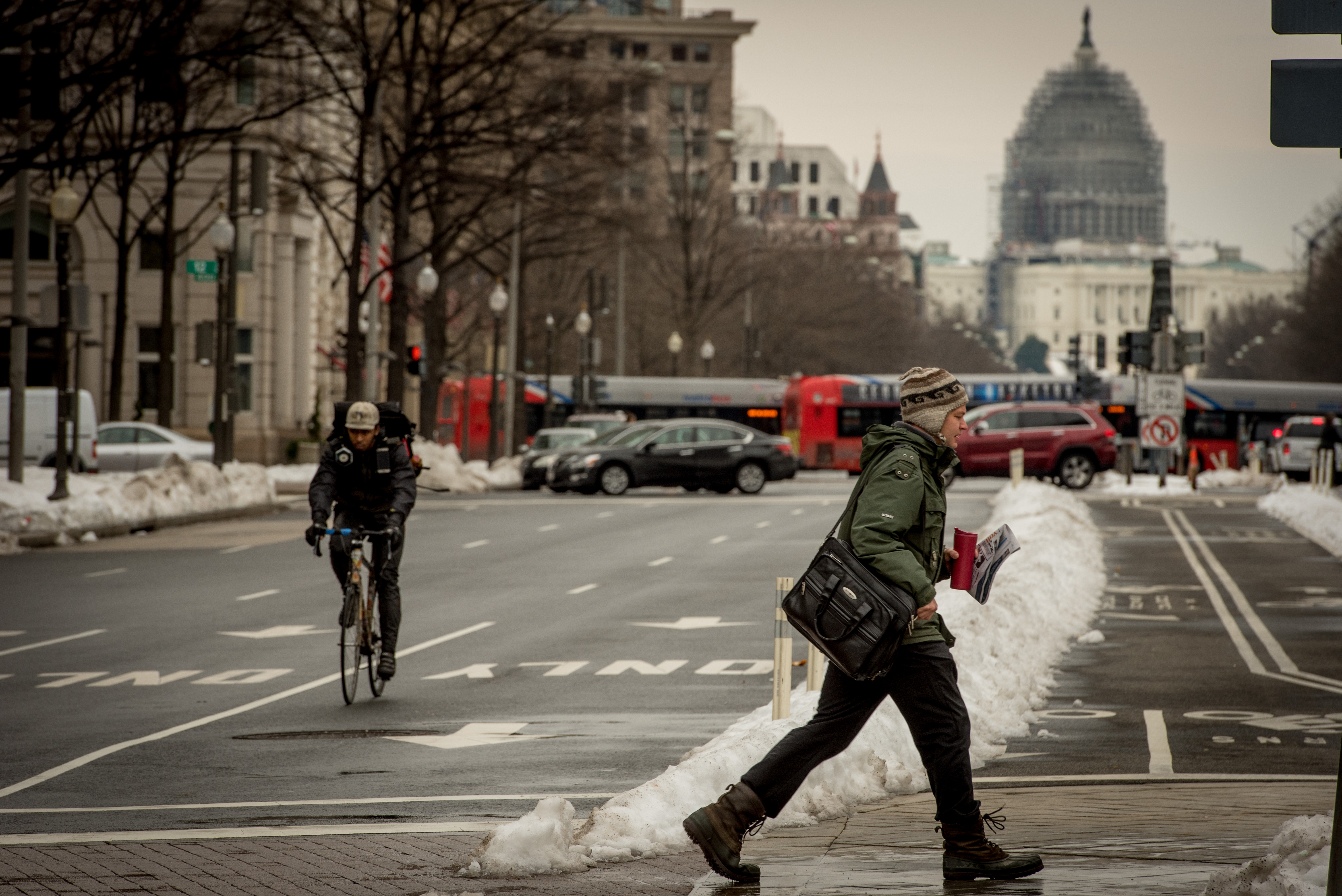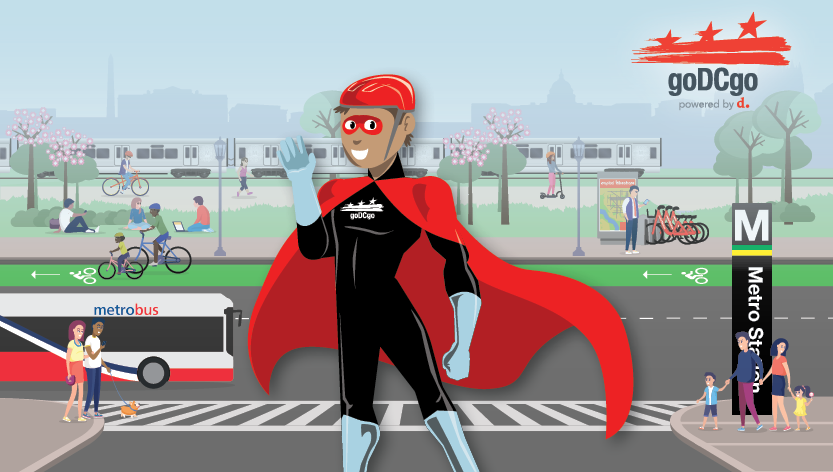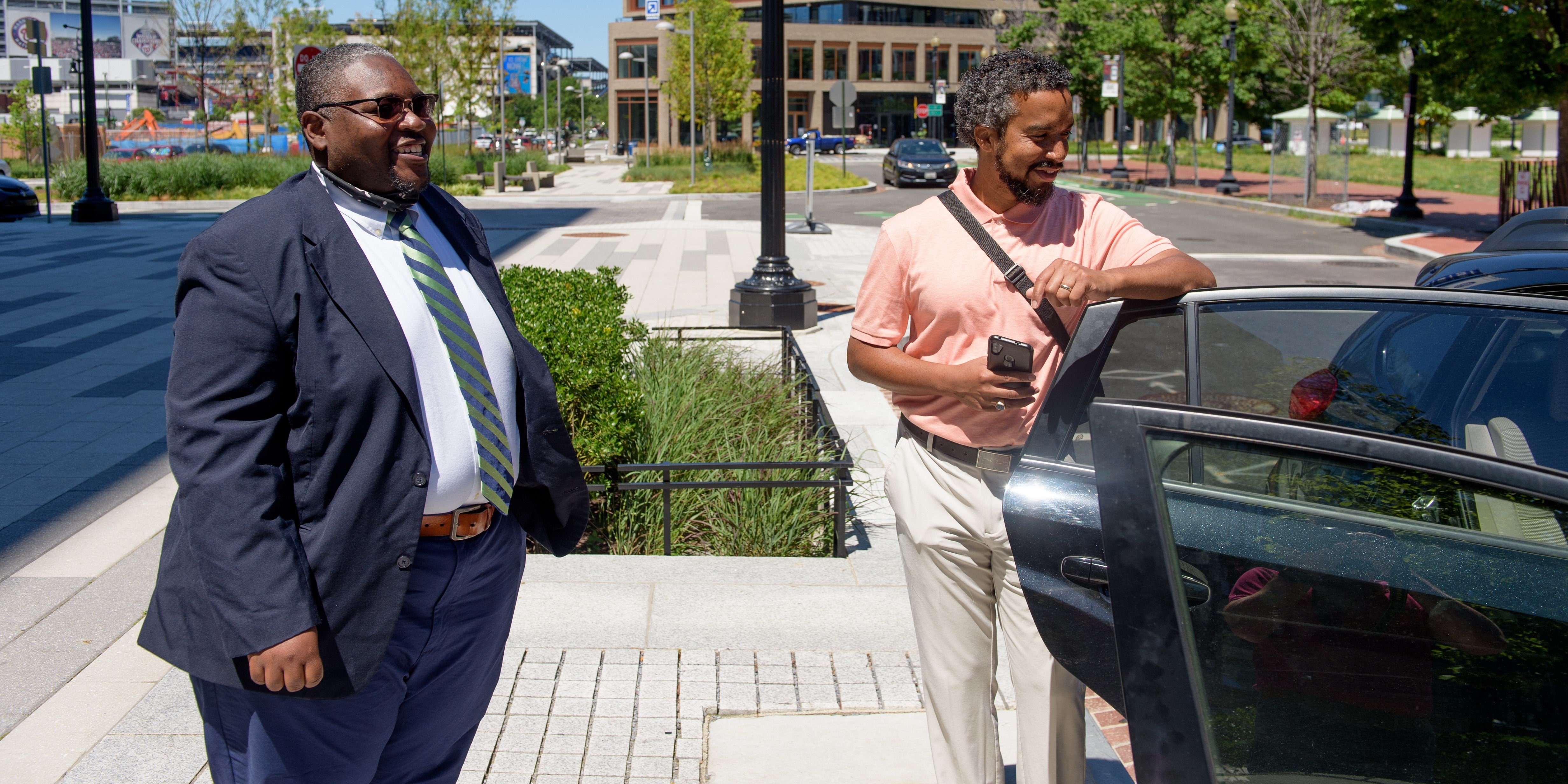January 11, 2017
Winter Walking Safety Tips
 From sleet and ice to snow and slush, District pedestrians need to get where they’re going regardless of the conditions.
From sleet and ice to snow and slush, District pedestrians need to get where they’re going regardless of the conditions.
So, grab your boots and follow our 10 winter walking tips for a safe and enjoyable stroll.
Dress warmly.
Dress in layers, and don’t forget the mittens or gloves and hat — you lose 35 percent of your body heat through your head!
Always wear proper footwear.
Have you witnessed, or perhaps experienced, an ice mishap? Often due to shoes ill-suited for slippery roads or snow, prepping your walk with footwear that places the entire foot on the surface of the ground and have visible treads will help your future treks. Avoid a smooth sole and opt for a heavy treaded shoe with a flat bottom.
Stop and scan.
Consider the conditions when planning your route. Walk where trees offer some shelter from the wind. In nasty weather, try a shopping mall, where you can walk — and window shop — without abandoning your walking regimen.
Consider reflective gear.
Drivers have decreased visibility in the winter due to fogged up windows, poor weather and early dark hours. If you are going to walk a long distance with poor lighting, consider reflective clothing, shoes or wristbands to increase your visibility.
Use sidewalks.
Use sidewalks when possible – if there are no sidewalks along your route, safety experts recommend facing traffic as you walk. This will help you make eye contact with drivers and give you a better chance of seeing cars and being seen.
Start slowly.
Begin your walk slowly and take it easy. Muscles warm up as you go. Adjust your pace for the weather conditions to decrease your chances of straining a muscle or taking a fall.
Walk in groups.
Not only is it warmer to walk in a group, you will also be more visible to cars on the road. There’s safety in numbers!
Leave the tunes off.
You’ll need to be especially alert, so try to avoid distractions while walking to protect yourself from any potentially unsafe situations.
Avoid the shortcuts.
Shortcuts are excellent when you’re in a hurry, but not a great idea if there is snow and ice on the ground. A shortcut path may be in bad condition because it is likely to be located where snow and ice removal is not possible.
Plan ahead.
Use special care when entering or exiting vehicles. Use the vehicle for support. Before standing, brace yourself with the vehicle door and seat back. This will give you some stability.
Did you miss our cold weather biking tips? Catch up on the latest here!



